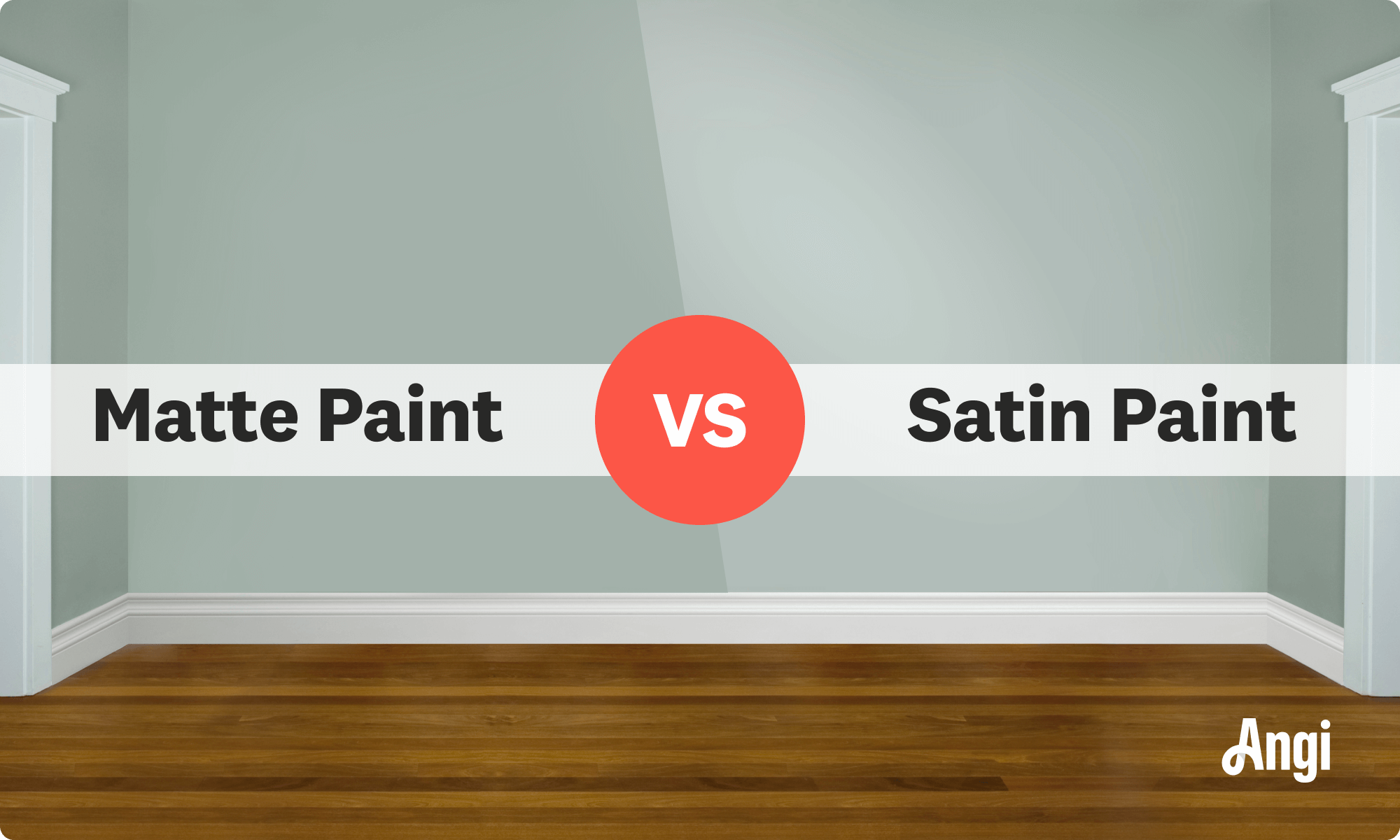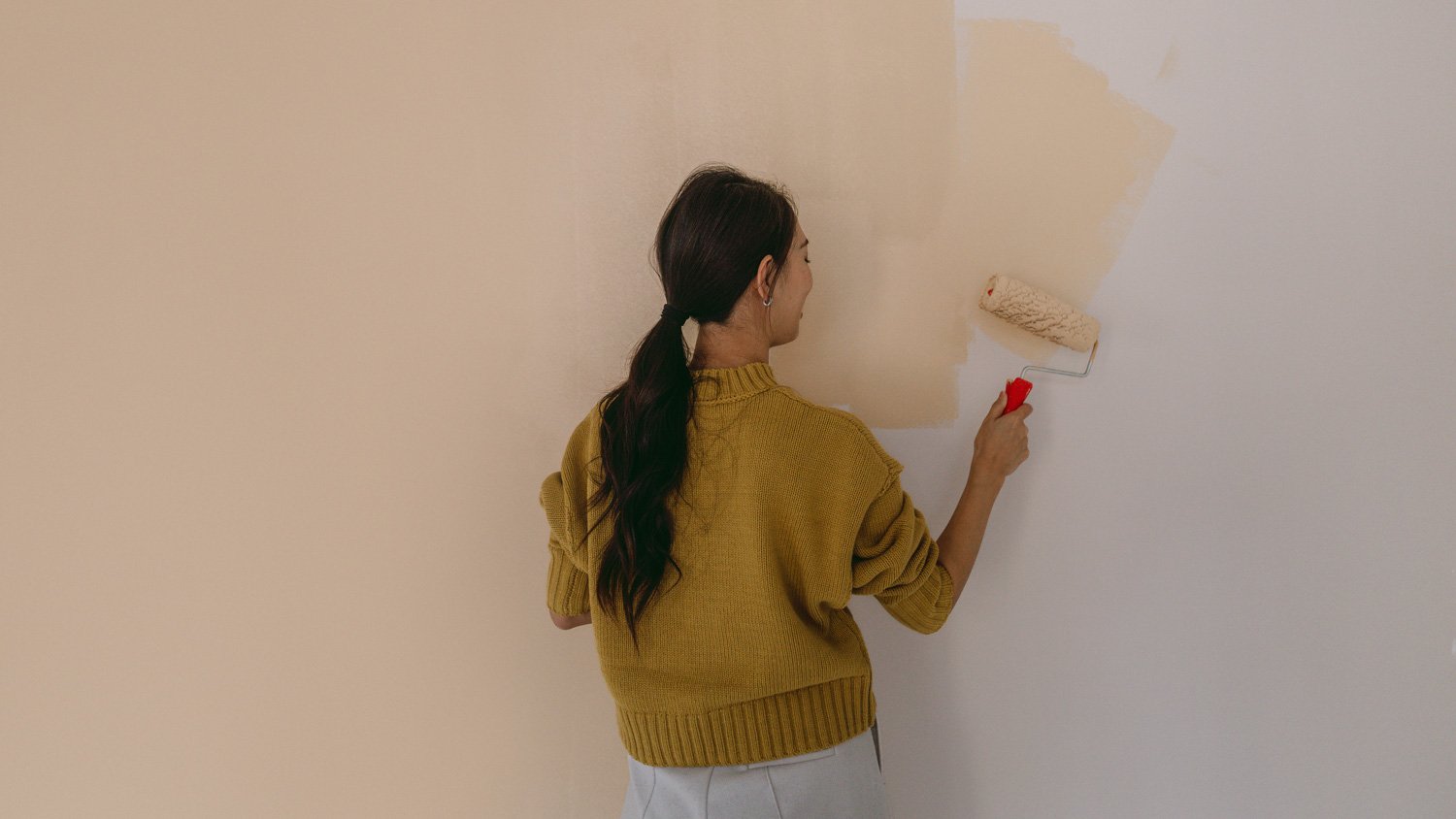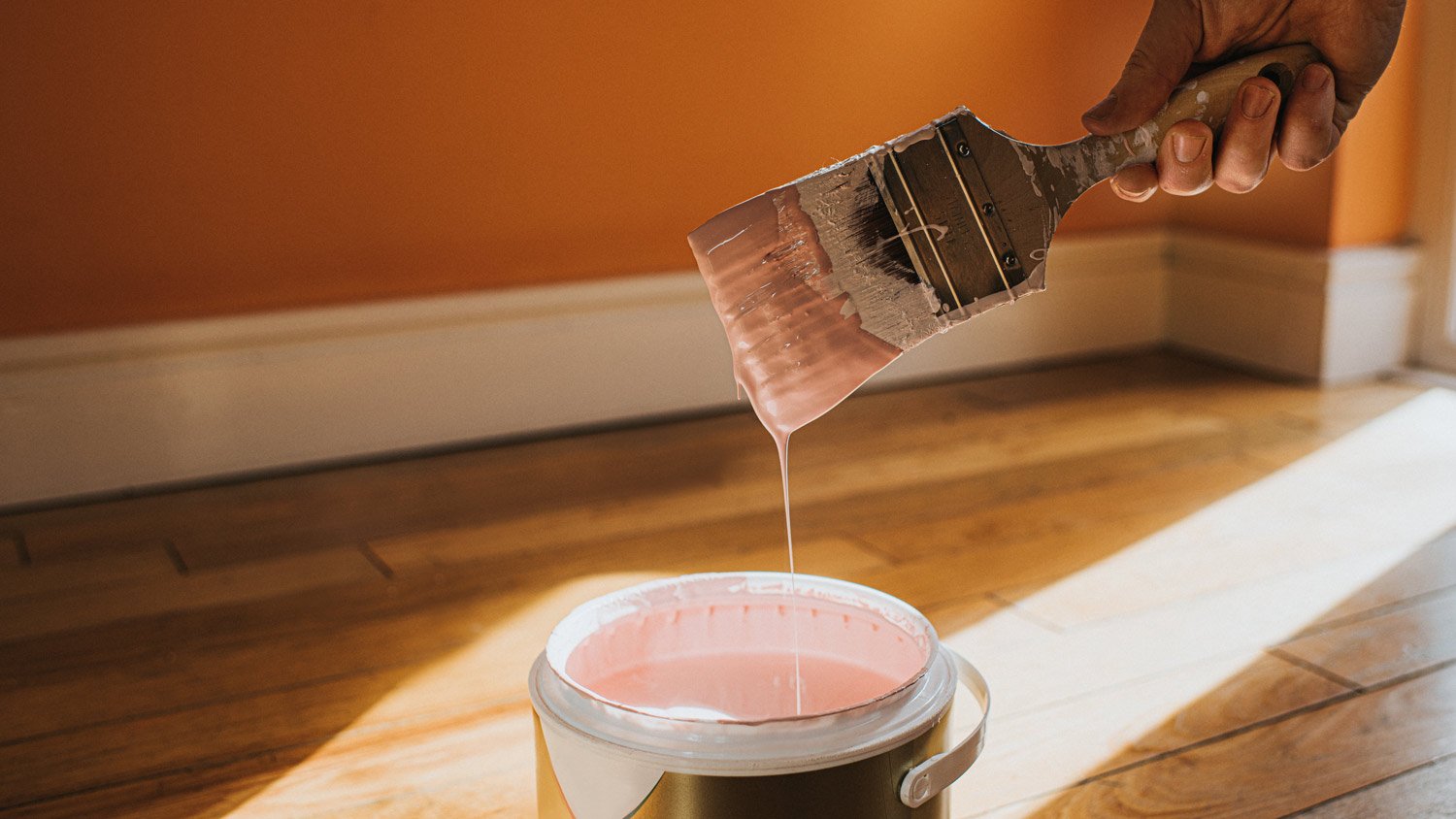
The cost to paint the interior of a house in Tampa, FL depends on size, layout, type of surface, and more. Learn what factors can influence your total in this guide.
A little sheen makes a big difference


Both matte and satin are popular interior paint choices.
Matte paint hides textural flaws but is harder to clean.
Satin paint resists stains and is more durable.
Choose satin for high-traffic areas and matte for cozy spaces.
You thought finding just the right shade of white was hard enough (who knew Alabaster and Cloud White were so different?), but now you have another decision to make: matte versus satin. Choosing the right paint finish can make a big difference in how your space looks and functions. This guide breaks down the pros, cons, and need-to-knows to help you pick the perfect finish for your next paint project.

The key differences between matte and satin paint come down to sheen (how shiny or reflective paint is once it dries), durability, and ease of cleaning. Matte offers a smooth, flat finish that hides imperfections and helps hues pop. Satin provides a soft shine that makes it easier to wipe away fingerprints, crayons, and food splatters, making it ideal for high-traffic and moisture-prone areas.

Matte paint offers a low-sheen, velvety finish that creates a calm, elegant look. Thanks to its lack of reflection, it’s a pro at hiding imperfections. While rich and modern, matte finishes are less durable and harder to clean, meaning they may not be the best choice for high-traffic areas.
| Pros | Cons |
|---|---|
| Hides imperfections well | Difficult to clean |
| Soft, sophisticated appearance | Can scuff or mark easily |
| Ideal for ceilings and bedrooms | Not recommended for kitchens or bathrooms |
Best for:
Low-traffic areas such as bedrooms and offices
Ceilings
Walls with surface flaws
Homeowners seeking a modern, flat finish
Matte paint is the go-to for masking patched drywall or uneven surfaces. Its light-absorbing properties soften a room’s look and offer a luxe, high-end aesthetic. It also touches up more seamlessly than glossy paints, making it easier to keep the wall looking uniform after you fill in nail holes or fix dents and dings.
Matte paint’s biggest downside is its lack of durability when it comes to cleaning. It absorbs moisture and stains, making it harder to wipe down without damaging the finish. In high-trafficked areas such as hallways, bathrooms, and kitchens, this can lead to frequent repainting or visible wear.

Satin has a soft, pearly luster, offering a middle ground between matte and glossy. It’s smoother and more reflective than matte, making it more resistant to dirt, scuffs, and moisture. Its ability to wipe clean makes it a go-to choice for bustling families.
| Pros | Cons |
|---|---|
| More durable than matte | Highlights wall flaws |
| Easier to clean | Slightly more expensive |
| Suitable for high-traffic rooms | Touch-ups can be tricky |
Best for:
High-traffic areas such as hallways
Kitchens, bathrooms, and kids’ rooms
Those looking for both beauty and function
Satin paint balances durability and aesthetics. Its sheen repels water and dirt better than matte, making it easy to wipe clean. It’s a no-brainer for households with kids and pets, where cracker-crumb-covered fingerprints and muddy tails regularly make contact with the wall.
The extra sheen means satin paint can highlight surface flaws, such as drywall patches or cracks. Additionally, touch-ups can be more obvious, as the finish may differ slightly depending on the application technique.
Choosing between matte and satin often depends on where the paint is being applied, your design goals, and how much maintenance you’re in the mood for. For durability and everyday function, satin gets our vote. It’s easier to clean, holds up better to moisture, and lasts longer in high-traffic areas. However, matte paint wins for aesthetics in cozy, low-traffic rooms.
Matte paint offers a luxe look that absorbs light and hides imperfections. It’s a top choice for creating a comfortable atmosphere in bedrooms or formal spaces. Satin paint has a subtle shine that reflects light, which can highlight flaws.
Both satin and matte offer the full spectrum of colors, and many brands offer low-VOC options in either type. However, satin may be more limited in ultra-deep or ultra-flat tones, whereas matte excels in creating bold backdrops.
When it comes to resisting wear, satin wins. Its moisture resistance and easy-to-clean surface make it ideal for kitchens, bathrooms, and hallways. Matte finishes are less forgiving when it comes to cleaning or contact.
The average gallon of paint costs $25 but can vary widely depending on the brand and any special features. In general, satin paint costs slightly more than matte paint due to the additives required for durability and sheen. However, you could save money in the long run by having to repaint less often. Ultimately, picking one paint over the other in this scenario won’t have much impact on the overall cost to paint a room.
Matte paint is more forgiving during application and touch-ups. Since it hides flaws well and blends easily, it’s great for newbie painters. While still beginner-friendly, satin paint requires more care to avoid streaks and visible brush strokes. If you don’t want to go the DIY route, a local interior painter can handle the job.
Satin finishes are much easier to wipe clean—you can scrub off scuffs or stains without damaging the finish. Matte paint, while visually forgiving with uneven textures, doesn’t hold up well to cleaning or moisture.
From average costs to expert advice, get all the answers you need to get your job done.

The cost to paint the interior of a house in Tampa, FL depends on size, layout, type of surface, and more. Learn what factors can influence your total in this guide.

The cost to paint the interior of a house in Baltimore, MD depends on size, layout, type of surface, and more. Learn what factors can influence your total in this guide.

The cost to paint the interior of a house in Atlanta, GA depends on size, layout, type of surface, and more. Learn what factors can influence your total in this guide.

Wondering how much you should pay a painter upfront? Check out this guide to learn when and how much you can expect to pay house painters for services.

Knowing what paint to use for your bathroom ceiling can prevent mold and mildew. Learn how to choose the best paint for your bathroom ceiling.

If your home has windows galore, you’ll want to pick a color scheme that plays to that advantage. Use these paint colors for rooms with lots of natural light.